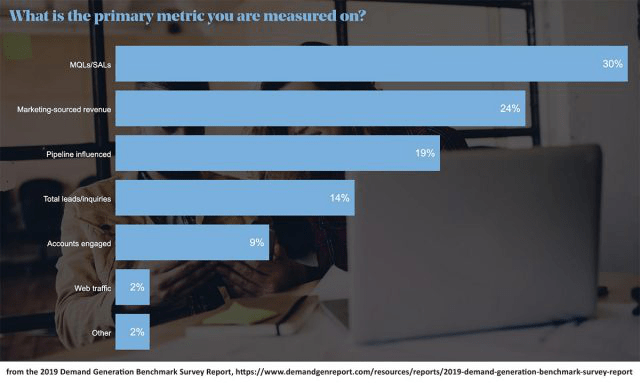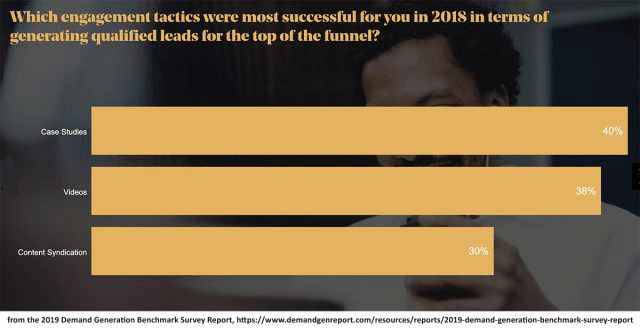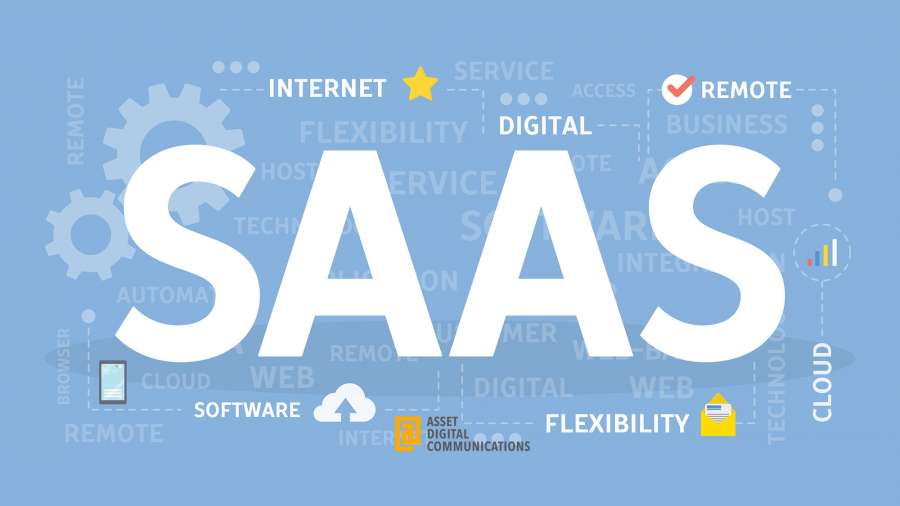Top Lead Generation Tips for SaaS Companies – Use SMART Approach
While a SaaS product might have limitless distribution (it’s on the Cloud!) and no marginal cost of production, lead generation for SaaS companies still is difficult.
Let’s take a look why.
As of 2018, SaaS generated over USD 121.31 billion in revenue, the highest in the global public IT cloud services market.

According to a report by Pacific Crest Securities, about 30%-50% of this earned revenue was spent towards Sales and Marketing.
You might be wondering why is the Sales & Marketing spend so high?
The SaaS industry is fiercely competitive. For a B2B SaaS marketer, the competition is well-funded, has very little barriers to entry and is using new and sophisticated tools that give quick access to actionable insights.
Moreover, the B2B SaaS industry tends to have longer Sales cycles (can be years before a deal closes!).
In such a scenario, Marketing Qualified Leads or Sales Accepted Leads become the barometer of a healthy Sales pipeline. And more MQLs and SQLs doesn’t always mean better.
While getting more leads is important, the ‘quality ‘ of those leads matters equally if not more.

Keeping that in mind here are some lead generation tips for SaaS companies:
The SMART way of lead generation for SaaS companies
In a rapidly changing SaaS industry, the first step is to choose your goals smartly. The best way to go about doing this is to use SMART goals. SMART goals act as your north star when setting up your lead generation strategy.
SMART is an abbreviation that stands for –
Specific
- What do I want to achieve?
- Who is involved?
- Why is this goal important?
Measurable
- What is the metric/ benchmark that’ll measure this goal against?
Attainable
- Can I attain this goal with the given resources or am I aiming too high?
Realistic
- Have I taken into consideration all the challenges in achieving this goal?
- Do I have the required resources to achieve this goal?
Time-bound
- When should I achieve this goal?
Here’s an example of how a SMART goal should sound like –
Increase the number of MQLs by 15% by the end of Q4 with a targeted email campaign.
Buyer Personas and Journeys as a lead generation engine
The leads you get will only be as good as the buyer personas you create. And your buyer persona will reflect how well you know your customer.
A buyer persona is a semi-fictional representation of your ideal customer which is based on market data as well as real data about your customers. It is your customer archetype.
A buyer persona will include your customers’ demographics, psychographics and firmographics. And having an accurate buyer persona will help you fine-tune your campaign targeting and make sure you get quality leads.
Once you’ve figured out your personas, look into where your customers are in their buyers’ journey. You need to target your customers basis where they are in their journey –
- Awareness Stage: the buyer has discovered a pain point and is looking to learn more about it.
- Consideration Stage: the buyer understands the pain point and is now looking for possible solutions
- Decision Stage: the buyer has a shortlist of solutions and is now looking for information to help make that final decision
Your SaaS companies’ lead generation strategy will depend upon which stage of the journey your buyer is at.
Talk about your customer success stories
The best way to generate high quality leads is to invest in case studies. There is no better way to talk about your SaaS companies’ successes than by creating a case study which talks about the value you created for your customers.

Lead generation for SaaS companies is a complex process and the content strategy has to change at every stage of the buyer’s journey as we discussed previously.
Case Studies can help you target the mid to bottom funnel (consideration and/or decision stage) of your leads by showing them that you’ve worked with similar customers with similar problems before as well.
Concise case studies highlighting tangible results and value created expedite the buyer’s journey in favor of your SaaS solution. If you are wary about disclosing your customers name invest in ‘blind’ case studies where the name is not mentioned.
Go out there and show the value you’ve created for others before asking for a share of the wallet from your prospect.
Create high conversion landing pages
A landing page is a dedicated webpage created to deliver a lead magnet (whitepaper, case study, video etc.) in the most efficient way possible, which means having a high conversion rate.
Without a high-conversion landing page, you might attract as many leads as you want to your page but very few of them will actually convert by filling that form.
Here’s what you need to keep in mind while creating a landing page –
- Clean and clear design – when a visitor lands on your page they should immediately understand what they’re going to get by filling that form. The better you can do that with content and design, the better your landing page will convert.
- Consistency and trust – don’t make a shady landing page. Be clear and authentic in your communication. Talk about what your business does and sells.
- Value proposition – your landing page content should very specifically describe the problem it is trying to solve.
Conclusion
The SaaS industry is effectively a buyer’s market because of the many options available and wealth of information online.
In such a scenario, lead generation for SaaS companies needs to use a smart approach. Start with creating S.M.A.R.T. goals and understanding your buyer personas and journey.
Next choose what are the high-performing pieces of content for you. Most often these will be customer testimonials and case studies since they so clearly communicate the value you have already created.
Package your content in a high converting landing page with a clear value proposition, and wait for the leads to pour in!



